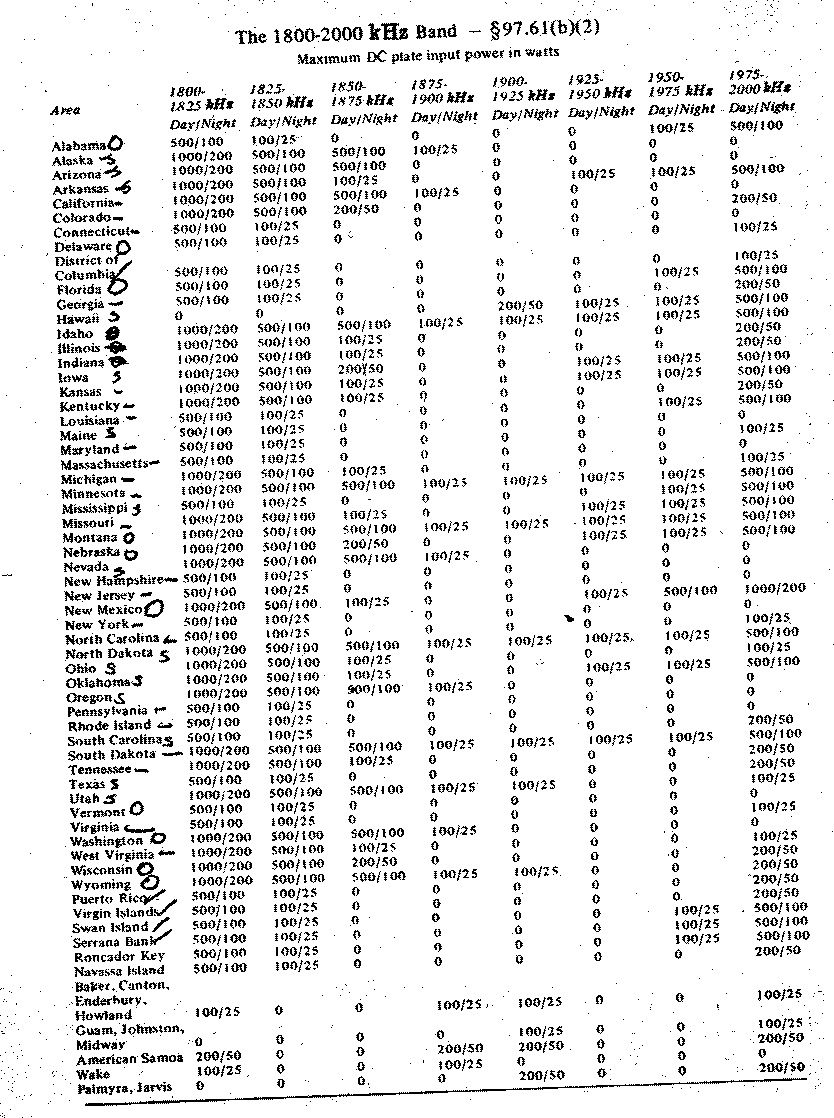 The 160 Meter band was reopened to use by Amateur Radio Operators in 1949, but the band was also used for the LORAN radio navigation system. That system allowed ships to plot their location quite accurately. It relied on shore stations that transmitted synchronized signals. The time difference between the two signals placed the ship on a given line, and by noting the intersection of two such lines, the location could be determined.
The 160 Meter band was reopened to use by Amateur Radio Operators in 1949, but the band was also used for the LORAN radio navigation system. That system allowed ships to plot their location quite accurately. It relied on shore stations that transmitted synchronized signals. The time difference between the two signals placed the ship on a given line, and by noting the intersection of two such lines, the location could be determined.
Because the band was shared, hams were limited in both frequency and power to protect the LORAN signals. The map shown above showed the initial restrictions in 1949, and appeared in the September 1949 issue of Radio Electronics.
Essentially, each state and territory was assigned two 25 kHz segments with specified day and night power levels. The Gulf Coast states were allowed 200 watts power during the day, but this segment of the country was not allowed on the air at all after local sunset.
By the mid-1970s when I got on the air, the restrictions had been relaxed considerably, and the band was quite good for regional contacts at night. While ‘phone operation was allowed, almost all of the activity I remember was CW. The restrictions as of 1975 are shown here, from the 1975 edition of the ARRL License Manual:

